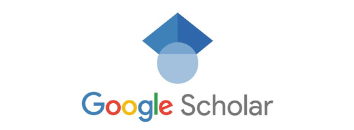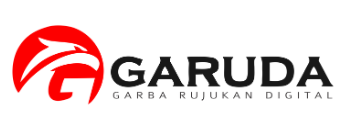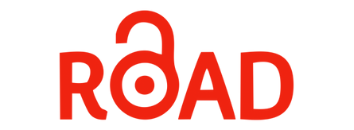CITY BRANDING VS. CULTURAL BRANDING: TOWARDS A THEORITICAL FOR DEVELOPING BANDUNG IDENTITY
DOI:
https://doi.org/10.24002/kinerja.v23i1.2125Abstract
City branding is not just an image of the city but also an identity which shows the origin and character of the city. When branding is associated to marketing and advertisement of the city, image/identity shows sovereignty and pride of the city. The transformation of Indonesian government mechanism from centralization to decentralization has brought new sight of government leadership and management. Regional government like city, district, or province has almost full authority on conducting their own government. Bandung city as one of cities in Indonesia has showed its ability on conducting city branding. “Bandung Juara” as Bandung city branding could give positive impact on regional economic development through city advertisement. In the other side, the cultural identity of Bandung city does not arise along with those city branding. This study aims to identify the identity of Bandung through city branding compared with cultural branding. This research uses descriptive analysis method by analyzing synthesis literature from some previous researches and related information of Bandung city which collected and summarized to get conclusion about Bandung as branding city vs. culture branding. The finding shows that creativity and modernity are very dominant on Bandung city branding strategy. It gives positive impact on economic development, but in the other side it covers their original culture. Sundanese culture as original culture of Bandung city did not totally supported on city branding strategy. This problem could make Sundanese culture extinct because it will be leaft behind and replaced with modern- culture.
Keywords: Bandung, city branding, cultural branding, city image, creative city, Sundanese culture
References
______. 2017. Jakarta in Figures 2017. Jakarta: BPS-statistics of DKI Jakarta Province.
______. 2017. Surabaya Municipality in Figures 2017. Surabaya: BPS-statistics of Surabaya Municipality.
______. 2017. Bandung Municipality in Figures 2017. Bandung: BPS-statistics of Bandung Municipality.
Achwan, R. 2013. Kelekatan Kelembagaan: Industri Distro Fesyen di Bandung. Jurnal Sosiologi Masyarakat, 18(2), 139-160.
Anholt, S. (2007). What is competitive identity?. In Competitive identity (pp. 1-23). Palgrave Macmillan, London.
Ashworth, G. J. (2000). Heritage, tourism and places: A review. Tourism recreation research, 25(1), pp. 19-29.
Caldwell, N., & Freire, J. R. (2004). The differences between branding a country, a region and a city: Applying the Brand Box Model. Journal of brand management, 12(1), pp. 50-61.
Chaerani, R.Y., 2011. Pengaruh City Branding Terhadap City Image (Studi Pencitraan Kota Solo:‘The Spirit of Java’). JRK, 2(4).
Christin, M., & Fauzan, S.F. 2015. City Branding Kota Bandung melalui Bus Bandros. Jurnal Komunikator, 7(2), pp. 87-92.
Hani, U., Azzadina, I., Sianipar, C.P.M., Setyagung, E.H. and Ishii, T., 2012. Preserving cultural heritage through creative industry: A lesson from Saung Angklung Udjo. Procedia Economics and Finance, 4, pp.193-200.
Jaelani, A., Setyawan, E., & Hasyim, N. 2016. Religious Heritage Tourism and Creative Economy in Cirebon: The Diversity of Religious, Cultures and Culinary. Journal of Social and Administrative Sciences, 3(1), pp. 63-76.
Jannah, B. 2014. Pengaruh City Branding dan City Image Terhadap Keputusan Berkunjung Wisatawan ke Banyuwangi. Jurnal Administrasi Bisnis, 17(1), pp. 1-7.
Juanim, J. and Rahmawati, N.L., 2015. Pengaruh City Branding terhadap Image Of Urban Destination dan Dampaknya pada Post-Visit Behavior. TRIKONOMIKA, 14(1), pp. 66-75.
Kavaratzis, M. (2004). From city marketing to city branding: Towards a theoretical framework for developing city brands. Place branding, 1(1), pp. 58-73.
Kavaratzis, M., & Ashworth, G. J. (2006). City branding: an effective assertion of identity or a transitory marketing trick?. Place Branding, 2(3), pp. 183-194.
Kostof, S. (1992). The city assembled. The elements of urban form through history.
Landry, C. (2012). The creative city: A toolkit for urban innovators. Routledge.
Miller, M.A., 2013. Decentralizing I ndonesian City Spaces as New ‘Centers’. International Journal of Urban and Regional Research, 37(3), pp. 834-848.
Moilanen, T., & Rainisto, S. (2008). How to brand nations, cities and destinations: a planning book for place branding. Springer.
Munandar, H. and Suherman, M., 2016. Aktivitas Komunikasi Pemerintahan Ridwan Kamil di Media Sosial. Jurnal Hubungan Masyarakat, Gelombang, 1, pp. 2015-2016.
Moleong Lexy, J. 2009. Metode Penelitian Kualitatif Edisi Revisi. Bandung: Remaja Rosdakarya.
Murfianti, F. 2010. Membangun City Branding Melalui Solo Batik Carnival. Jurnal Penelitian Seni Budaya, 2(1), pp. 14-20.
Sugiarsono, J. 2009. City branding Bukan Sekedar membuat Logo dan Slogan. Majalah SWA. Jakarta.
Sugiyono, P. 2005. Memahami Penelitian Kualitatif. Bandung: Alfabeta.
Yuli, A. 2011. City Branding Sebagai Strategi Pengembangan Pariwisata Ditinjau dari Aspek Hukum Merek (Studi Kasus City Branding Daerah Istimewa Yogyakarta Sebagai Daerah Tujuan Wisata Unggulan di Indonesia). Jurnal Ilmiah Ilmu Hukum QISTI, 5(1), pp. 50-68.
Yuwo, H., Ford, J. B., & Purwanegara, M. S. 2013. Customer-based brand equity for a tourism destination (CBBETD): The specific case of Bandung City, Indonesia. Organizations and markets in Emerging Economies, 4(1), pp. 8-22.














